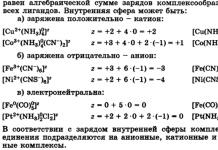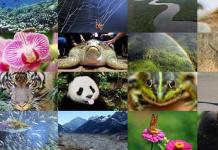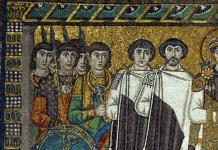All the diversity of the living world is almost impossible to express in quantitative terms. For this reason, taxonomists have combined them into groups based on certain characteristics. In our article we will look at the basic properties, basics of classification and organisms.
Diversity of the living world: briefly
Each species existing on the planet is individual and unique. However, many of them have a number of similar structural features. It is based on these characteristics that all living things can be grouped into taxa. In the modern period, scientists identify five Kingdoms. The diversity of the living world (the photo shows some of its representatives) includes Plants, Animals, Fungi, Bacteria and Viruses. The last of them do not have a cellular structure and, on this basis, belong to a separate Kingdom. The virus molecule consists of nucleic acid, which can be represented by both DNA and RNA. Around them is a protein shell. With such a structure, these organisms are able to carry out only the only characteristic of living beings - to reproduce by self-assembly inside the host organism. All bacteria are prokaryotes. This means that their cells do not have a formed nucleus. Their genetic material is represented by nucleoids - circular DNA molecules, clusters of which are located directly in the cytoplasm.
Plants and animals differ in the way they feed. The former are capable of synthesizing organic substances themselves during photosynthesis. This method of nutrition is called autotrophic. Animals absorb ready-made substances. Such organisms are called heterotrophs. Fungi have characteristics of both plants and animals. For example, they lead an attached lifestyle and unlimited growth, but are not capable of photosynthesis.
Properties of living matter
By what characteristics, in general, are organisms called living? Scientists identify a number of criteria. First of all, this is the unity of the chemical composition. All living matter is formed by organic substances. These include proteins, lipids, carbohydrates and nucleic acids. All of them are natural biopolymers consisting of a certain number of repeating elements. It also includes nutrition, respiration, growth, development, hereditary variability, metabolism, reproduction, and the ability to adapt.
Each taxon is characterized by its own characteristics. For example, plants grow unlimitedly throughout their lives. But animals increase in size only up to a certain time. The same goes for breathing. It is generally accepted that this process occurs only with the participation of oxygen. This type of breathing is called aerobic breathing. But some bacteria can oxidize organic substances even without the presence of oxygen - anaerobically.

Diversity of the living world: levels of organization and basic properties
Both a microscopic bacterial cell and a huge blue whale have these signs of living things. In addition, all organisms in nature are interconnected by continuous metabolism and energy, and are also necessary links in food chains. Despite the diversity of the living world, levels of organization imply the presence of only certain physiological processes. They are limited by structural features and species diversity. Let's look at each of them in more detail.

Molecular level
The diversity of the living world, along with its uniqueness, is determined precisely by this level. The basis of all organisms are proteins, the structural elements of which are amino acids. Their number is small - about 170. But the protein molecule contains only 20. Their combination leads to an endless variety of protein molecules - from the reserve albumin of bird eggs to the collagen of muscle fibers. At this level, the growth and development of organisms as a whole, the storage and transmission of hereditary material, metabolism and energy conversion take place.

Cellular and tissue level
Molecules of organic substances form cells. The diversity of the living world, the basic properties of living organisms at this level are already manifested in full. Single-celled organisms are widespread in nature. These can be bacteria, plants, and animals. In such creatures the cellular level corresponds to the organism level.
At first glance, it may seem that their structure is quite primitive. But this is not true at all. Just imagine: one cell performs the functions of an entire organism! For example, it carries out movement using a flagellum, breathing across the entire surface, digestion and regulation of osmotic pressure through specialized vacuoles. The sexual process is also known in these organisms, which occurs in the form of conjugation. Tissues are formed. This structure consists of cells that are similar in structure and function.

Organismal level
In biology, the diversity of the living world is studied precisely at this level. Each organism is a single whole and works in harmony. Most of them consist of cells, tissues and organs. The exceptions are lower plants, fungi and lichens. Their body is formed by a collection of cells that do not form tissue and is called a thallus. The function of roots in organisms of this type is performed by rhizoids.

Population-species and ecosystem level
The smallest unit in taxonomy is the species. This is a collection of individuals that have a number of common traits. First of all, these are morphological, biochemical characteristics and the ability to freely interbreed, allowing these organisms to live within the same habitat and produce fertile offspring. Modern taxonomy includes more than 1.7 million species. But in nature they cannot exist separately. Several species live within a certain territory. This determines the diversity of the living world. In biology, a collection of individuals of the same species that live within a certain area is called a population. They are isolated from such groups by certain natural barriers. These can be bodies of water, mountains or forests. Each population is characterized by its diversity, as well as its gender, age, environmental, spatial and genetic structure.

But even within a single habitat, the species diversity of organisms is quite large. All of them are adapted to living in certain conditions and are closely related trophically. This means that each species is a source of food for the other. As a result, an ecosystem or biocenosis is formed. This is a collection of individuals of different species, connected by habitat, circulation of substances and energy.
Biogeocenosis
But they constantly interact with all organisms. These include air temperature, salinity and chemical composition of water, the amount of moisture and sunlight. All living beings are dependent on them and cannot exist without certain conditions. For example, plants feed only in the presence of solar energy, water and carbon dioxide. These are the conditions for photosynthesis, during which the organic substances they need are synthesized. The combination of biotic factors and inanimate nature is called biogeocenosis.
What is the biosphere
The diversity of the living world on the widest scale is represented by the biosphere. This is the global natural shell of our planet, uniting all living things. The biosphere has its boundaries. The upper one, located in the atmosphere, is limited by the ozone layer of the planet. It is located at an altitude of 20 - 25 km. This layer absorbs harmful ultraviolet radiation. Life above it is simply impossible. At a depth of 3 km there is the lower boundary of the biosphere. Here it is limited by the presence of moisture. Only anaerobic bacteria can live this deep. In the watery shell of the planet - the hydrosphere, life was found at a depth of 10-11 km.
So, living organisms that inhabit our planet in different natural shells have a number of characteristic properties. These include their ability to breathe, feed, move, reproduce, etc. The diversity of living organisms is represented by different levels of organization, each of which differs in the level of complexity of structure and physiological processes.
Diversity of living organisms our planet is determined by many factors. These are the levels of their organization: precellular life forms (viruses and bacteriophages), prenuclear organisms (prokaryotes), unicellular eukaryotes (protests) and multicellular eukaryotes (representatives of fungi, flora and fauna). The variety of forms of organisms is determined by their habitat. They inhabit all environments - air, water, soil. Their sizes are different. Viruses and bacteria can be seen with an electron microscope; protists, some coelenterates, worms, and arthropods can be seen with a light microscope. Certain species of plants (baobab, sequoia) and animals (whales, giraffes) reach gigantic sizes. The problem of studying the huge mass of representatives of the organic world with its diversity requires systematics and the development of a certain classification of them.
Principles of taxonomy. Classification of living organisms. Basic systematic categories. A species is an elementary unit of taxonomy.
Taxonomy- a branch of biology that develops a natural classification of organisms based on family ties between individual groups in the light of their historical development.
Classification- this is a conditional grouping of a set of objects, phenomena, individuals according to any similar characteristic (or characteristics) based on their relationship.
Natural classifications should reflect the natural order in nature, the relationships and interconnections of organisms, their origin, features of external and internal structure, chemical composition, and characteristics of life.
Carl Linnaeus, in his work Species of Plants (1753), laid the foundations for the classification of plants, giving the concepts of genus and species, and then order as a larger category.
Organisms are combined into systematic (taxonomic) groups taking into account genealogical relationships, morphological features, methods of reproduction and development.
The elementary unit of classification is the species. View- this is a collection of individuals inhabiting a certain territory (area), similar in structure, having a common origin, interbreeding with each other and producing fertile offspring.
Species with similar characteristics are grouped into genera, genera into families, families into orders (orders), orders into classes. Classes belong to certain departments (types), departments - to sub-kingdoms, sub-kingdoms - to kingdoms.
For example: view— Cultural buckwheat, genus— Buckwheat, family- Buckwheat, order— Buckwheat, Class- Dicotyledons, Department- Flowering, sub-kingdom— Higher plants, kingdom- Plants.
The classification of K. Linnaeus was called binary (double) nomenclature. Each plant, regardless of where it is found, has a constant name: the first is generic, the second is specific.
Kingdoms of living organisms
Currently there are 5 kingdoms of wildlife: Bacteria (Drobyanka); Protista; Mushrooms; Plants; Animals.
 The diversity of the modern organic world as a result of biological evolution The evolution of living beings proceeded in parallel along two lines: on the one hand, unicellular prenuclear and nuclear organisms developed, on the other hand, multicellular organisms. The development of multicellular organisms was carried out in three directions: along the line of autotrophic organisms (plants), the line of heterotrophic organisms with the absorption of food by absorption (fungi) and the line of heterotrophic organisms with the ingestion of food (animals).
The diversity of the modern organic world as a result of biological evolution The evolution of living beings proceeded in parallel along two lines: on the one hand, unicellular prenuclear and nuclear organisms developed, on the other hand, multicellular organisms. The development of multicellular organisms was carried out in three directions: along the line of autotrophic organisms (plants), the line of heterotrophic organisms with the absorption of food by absorption (fungi) and the line of heterotrophic organisms with the ingestion of food (animals).
 In 1727, Linnaeus passed the exams and was enrolled at Lund University, studying medicine and self-education; In 1732, Linnaeus set off on a journey to Lapland - the result of A Brief Flora of Lapland; K. Linnaeus goes to Holland to receive his doctorate; He publishes the book “The System of Nature”. Order is a division of classes, introduced in order not to delimit more genera than the mind can easily perceive. Carl Linnaeus
In 1727, Linnaeus passed the exams and was enrolled at Lund University, studying medicine and self-education; In 1732, Linnaeus set off on a journey to Lapland - the result of A Brief Flora of Lapland; K. Linnaeus goes to Holland to receive his doctorate; He publishes the book “The System of Nature”. Order is a division of classes, introduced in order not to delimit more genera than the mind can easily perceive. Carl Linnaeus
 I called trees trees, I called flowers flowers. The great genius was right when he gave names to flowers: In the fatherland of plants there are no nameless herbs. An ordinary forest rose with a new fragrant flower - Forest Rose. oroy in t without ko, the system of sophia and iki - s in “Philosophy for otan sh ub Linnaeus, having grabbed from a nit n K. iadni wrote here nit ybrats “Ar in chaos, the theme of anike. - Sis luchno po botiki" fortunately nerdy can be ov". koto company fact pest Marmot, bobak, tarbagan, butterfly, whistler, sugur... - bobak marmot Marmota bobak
I called trees trees, I called flowers flowers. The great genius was right when he gave names to flowers: In the fatherland of plants there are no nameless herbs. An ordinary forest rose with a new fragrant flower - Forest Rose. oroy in t without ko, the system of sophia and iki - s in “Philosophy for otan sh ub Linnaeus, having grabbed from a nit n K. iadni wrote here nit ybrats “Ar in chaos, the theme of anike. - Sis luchno po botiki" fortunately nerdy can be ov". koto company fact pest Marmot, bobak, tarbagan, butterfly, whistler, sugur... - bobak marmot Marmota bobak
 C. Linnaeus and his services to science divided all plants into classes, classes into orders, orders into genera, genera into species; Linnaeus divided all animals into six classes; Linnaeus gave each living organism a species and generic name; Described about 10,000 plant species and over 4,200 animal species; Carried out a reform of the language of botany, introduced new terms; Placed man next to monkeys; Linnaeus' system was artificial, but played a huge role in the history of biology, as it helped to navigate the huge variety of living beings.
C. Linnaeus and his services to science divided all plants into classes, classes into orders, orders into genera, genera into species; Linnaeus divided all animals into six classes; Linnaeus gave each living organism a species and generic name; Described about 10,000 plant species and over 4,200 animal species; Carried out a reform of the language of botany, introduced new terms; Placed man next to monkeys; Linnaeus' system was artificial, but played a huge role in the history of biology, as it helped to navigate the huge variety of living beings.
 Systematics is the science of the diversity of species of organisms, their classification, family relationships and origin. Systematics (from the Greek systematikos - ordered, related to the system), a field of knowledge within which the problems of ordering in a certain way the designation and description of the entire set of objects that form a certain sphere of reality. Systematics is a branch of biological science that describes which genus, species, family, etc. a particular organism belongs to (and how these species-genera-families relate to each other). Taxon is a group of organisms assigned in the process of classification to a specific taxonomic category (taxon rank).
Systematics is the science of the diversity of species of organisms, their classification, family relationships and origin. Systematics (from the Greek systematikos - ordered, related to the system), a field of knowledge within which the problems of ordering in a certain way the designation and description of the entire set of objects that form a certain sphere of reality. Systematics is a branch of biological science that describes which genus, species, family, etc. a particular organism belongs to (and how these species-genera-families relate to each other). Taxon is a group of organisms assigned in the process of classification to a specific taxonomic category (taxon rank).
 Subject of study of systematics Description, designation, classification and construction of a system of living nature that would not only reflect the similarity in the structure of organisms and their kinship, but also take into account the history of the origin and evolution of different groups of organisms.
Subject of study of systematics Description, designation, classification and construction of a system of living nature that would not only reflect the similarity in the structure of organisms and their kinship, but also take into account the history of the origin and evolution of different groups of organisms.
 Construction of a biological system Currently, a set of characteristics of organisms is used: 1) structural features of organisms and their cells; 2) the history of the development of the group based on fossil remains; 3) features of reproduction and embryonic development; 4) nucleotide composition of DNA and RNA; 5) protein composition; 6) type of food; 7) type of reserve nutrients; 8) distribution of organisms, etc.
Construction of a biological system Currently, a set of characteristics of organisms is used: 1) structural features of organisms and their cells; 2) the history of the development of the group based on fossil remains; 3) features of reproduction and embryonic development; 4) nucleotide composition of DNA and RNA; 5) protein composition; 6) type of food; 7) type of reserve nutrients; 8) distribution of organisms, etc.
 Principles of taxonomy One of the first systems of living nature was created by the Swedish naturalist K. Linnaeus and described it in “The System of Nature” (1758). K. Linnaeus based his system on two principles: binary nomenclature and hierarchy. According to binary nomenclature, each species is called in Latin by two words: a noun and an adjective. For example, Acrid Buttercup and Golden Buttercup, etc. According to modern rules, when mentioning a species of organism in a text (scientific article, book) for the first time, the surname of the author who described it is given in Latin. For example, poisonous buttercup is written Ranunculus sceleratus Linnaeus (Poisonous buttercup of Linnaeus). Some of the most famous taxonomists are so well known that their names are abbreviated. For example, Trifolium repens L. (Linnaeus creeping clover). Once a view has been given a name, it cannot be changed.
Principles of taxonomy One of the first systems of living nature was created by the Swedish naturalist K. Linnaeus and described it in “The System of Nature” (1758). K. Linnaeus based his system on two principles: binary nomenclature and hierarchy. According to binary nomenclature, each species is called in Latin by two words: a noun and an adjective. For example, Acrid Buttercup and Golden Buttercup, etc. According to modern rules, when mentioning a species of organism in a text (scientific article, book) for the first time, the surname of the author who described it is given in Latin. For example, poisonous buttercup is written Ranunculus sceleratus Linnaeus (Poisonous buttercup of Linnaeus). Some of the most famous taxonomists are so well known that their names are abbreviated. For example, Trifolium repens L. (Linnaeus creeping clover). Once a view has been given a name, it cannot be changed.
 Principles of taxonomy The principle of hierarchy or subordination means that animal species are united into genera, genera into families, families into orders, orders into classes, classes into types, types into kingdoms. When classifying bacteria, fungi and plants, order is used instead of rank, order, and division is used instead of phylum. Often, to emphasize the diversity in a group, subordinate categories are used, for example, subspecies, subgenus, suborder, subclass or superfamily, superclass. In microbiology, terms such as “strain” and “clone” are used.
Principles of taxonomy The principle of hierarchy or subordination means that animal species are united into genera, genera into families, families into orders, orders into classes, classes into types, types into kingdoms. When classifying bacteria, fungi and plants, order is used instead of rank, order, and division is used instead of phylum. Often, to emphasize the diversity in a group, subordinate categories are used, for example, subspecies, subgenus, suborder, subclass or superfamily, superclass. In microbiology, terms such as “strain” and “clone” are used.
 Species - Malus domestica L. Genus - Malus Apple Family - Rosaceae Order - Rosales Class - Dicotyledons Dicotyledones Division - Angiosperms Angiospermae Kingdom - Plants Planta EMPIRE - Cellular SUB-EMPIRE Multicellular KINGDOM Animals SUB-KINGDOM Eumetazoans or true multicellular TYPE Chordata CLASS Mammals ORDER Predatory FAMILY Wolf GENUS Dog SPECIES Domestic dog
Species - Malus domestica L. Genus - Malus Apple Family - Rosaceae Order - Rosales Class - Dicotyledons Dicotyledones Division - Angiosperms Angiospermae Kingdom - Plants Planta EMPIRE - Cellular SUB-EMPIRE Multicellular KINGDOM Animals SUB-KINGDOM Eumetazoans or true multicellular TYPE Chordata CLASS Mammals ORDER Predatory FAMILY Wolf GENUS Dog SPECIES Domestic dog
 Species is the only taxonomic category that can be defined with relative precision. Here are some of the definitions of a species: A species is a group of individuals that have a unique set of morphological (structural) and functional characteristics, i.e. appearance, features of the location of organs and their functioning, etc. A species is a group of individuals capable of interbreeding to produce fertile offspring. A species is a group of individuals similar in genotype (number, size and shape of chromosomes). A species is a group of individuals occupying the same ecological niche.
Species is the only taxonomic category that can be defined with relative precision. Here are some of the definitions of a species: A species is a group of individuals that have a unique set of morphological (structural) and functional characteristics, i.e. appearance, features of the location of organs and their functioning, etc. A species is a group of individuals capable of interbreeding to produce fertile offspring. A species is a group of individuals similar in genotype (number, size and shape of chromosomes). A species is a group of individuals occupying the same ecological niche.
 Comparative characteristics of the kingdoms of living nature Characteristics Nuclear membrane Genetic material Mitochondria Chloroplasts Cell membrane Method of nutrition Motility Cellular specialization Respiration Life cycle Archaea Bacteria and Fungi Plants Protists Animals
Comparative characteristics of the kingdoms of living nature Characteristics Nuclear membrane Genetic material Mitochondria Chloroplasts Cell membrane Method of nutrition Motility Cellular specialization Respiration Life cycle Archaea Bacteria and Fungi Plants Protists Animals

The diversity of the modern organic world as a result of biological evolution The evolution of living beings proceeded in parallel along two lines: on the one hand, unicellular prenuclear and nuclear organisms developed, on the other hand, multicellular organisms. The development of multicellular organisms was carried out in three directions: along the line of autotrophic organisms (plants), the line of heterotrophic organisms with the absorption of food by absorption (fungi) and the line of heterotrophic organisms with the ingestion of food (animals).
John Ray is an English biologist, member of the Royal Society of London. Author of the first list of plants in England (1670) and the three-volume History of Plants (), in which he described and classified species. He proposed the first natural system of plants, introduced the concept of dicotyledons and monocotyledons, and distinguished between plants with bisexual and dioecious flowers. In his work “Systematic Review of Animals...” (1693) he proposed his classification. He used the concepts of “genus” and “species” and gave a definition of species. Ray (Ray) John () Undeservedly forgotten

CARL LINNEAUS (), Swedish naturalist For his outstanding scientific research, he was awarded the title "Prince of Botanists"

The life path of Carl Linnaeus was unusual. At school, Carl Linnaeus was considered one of the most incapable students. From early childhood, the boy was bewitched by the mysterious world of flowers, to which he devoted a lot of time. Karl's grades in physics and mathematics were good, but his knowledge of Latin, Greek and Ancient Greek was exceptionally poor. Many teachers and classmates treated Karl with irony because of his ridiculous hobby. Carl Linnaeus graduated from high school with an interesting description, written in a style completely unusual for us. Here is one of its fragments. A high school student is like a tree. It sometimes happens, although rarely, that the wild nature of a tree, despite any care, does not lend itself to cultivation. But, transplanted into another soil, the tree improves and bears good fruit. Only in this hope is the young man allowed to go to university, where perhaps... He will find himself in a climate favorable to his development.

In 1727, Linnaeus passed the exams and was enrolled at Lund University, studying medicine and self-education; In 1732, Linnaeus went on a journey to Lapland - the result of "A Brief Flora of Lapland"; K. Linnaeus goes to Holland to receive his doctorate; He publishes the book System of Nature. Order is a division of classes, introduced in order not to delimit more genera than the mind can easily perceive. Carl Linnaeus

Linnaeus was elected president of the Swedish Academy, became head of the department at his native Uppsala University, and later rector, received the Order of the Polar Star and nobility. Until the end of his life, Carl Linnaeus worked with complete dedication. C. Linnaeus in a wedding suit Noble coat of arms of C. Linnaeus

I called trees trees, I called flowers flowers. The great genius was right when he gave names to flowers: In the fatherland of plants there are no nameless herbs. Marmot, bobak, tarbagan, butterfly, whistler, sugur... - bobak marmot Marmota bobak “The Ariadne thread of botany is a system without which there is chaos in botany,” wrote C. Linnaeus in “Philosophy of Botany.” “The system is a thread, by grasping which you can safely get out of the diversity of facts.” An ordinary forest rose with a new fragrant flower - Forest Rose.

C. Linnaeus and his services to science divided all plants into classes, classes into orders, orders into genera, genera into species; Linnaeus divided all animals into six classes; Linnaeus gave each living organism a species and generic name; Described about plant species and over 4200 animal species; Carried out a reform of the language of botany, introduced new terms; Placed man next to monkeys; Linnaeus' system was artificial, but played a huge role in the history of biology, as it helped to navigate the huge variety of living beings.

Systematics (from the Greek systematikos, ordered, relating to a system), a field of knowledge within which the problems of designating and describing the entire set of objects that form a certain sphere of reality are solved. Systematics is a branch of biological science that describes what genus, species, family, etc. this or that organism belongs (and how these species-genera-families relate to each other). Taxonomy is the science of the diversity of species of organisms, their classification, family relationships and origin. Taxon is a group of organisms assigned in the process of classification to a specific taxonomic category (taxon rank).


Construction of a biological system Currently, a set of characteristics of organisms is used: 1) structural features of organisms and their cells; 2) the history of the development of the group based on fossil remains; 3) features of reproduction and embryonic development; 4) nucleotide composition of DNA and RNA; 5) protein composition; 6) type of food; 7) type of reserve nutrients; 8) distribution of organisms, etc.

Principles of taxonomy One of the first systems of living nature was created by the Swedish naturalist K. Linnaeus and described it in “The System of Nature” (1758). K. Linnaeus based his system on two principles: binary nomenclature and hierarchy. According to binary nomenclature, each species is called in Latin by two words: a noun and an adjective. For example, Buttercup caustic and Buttercup golden, etc. According to modern rules, when mentioning a species of organism in a text (scientific article, book) for the first time, the surname of the author who described it is given in Latin. For example, poisonous buttercup is written Ranunculus sceleratus Linnaeus (Poisonous buttercup of Linnaeus). Some of the most famous taxonomists are so well known that their names are abbreviated. For example, Trifolium repens L. (Linnaeus creeping clover). Once a view has been given a name, it cannot be changed.

Principles of taxonomy The principle of hierarchy or subordination means that animal species are united into genera, genera into families, families into orders, orders into classes, classes into types, types into kingdoms. When classifying bacteria, fungi and plants, order is used instead of rank, order, and division instead of type. Often, to emphasize the diversity in a group, subordinate categories are used, for example, subspecies, subgenus, suborder, subclass or superfamily, superclass. In microbiology, terms such as “strain” and “clone” are used.

Species Apple tree Malus domestica L. Genus Apple tree Malus Family Rose Rosaceae Order Rose Rosales Class Dicotyledons Dicotyledones Division Angiosperms Angiospermae Kingdom Plants Planta EMPIRE - Cellular SUB-EMPIRE - Multicellular KINGDOM Animals SUBKINGDOM Eumetazoans or true multicellular TYPE Chordata CLASS Mammals ORDER Carnivorous FAMILIES STU Wolf GENUS Dog SPECIES Dog home

Species Species is the only taxonomic category that can be given a relatively precise definition. Here are some of the definitions of a species: A species is a group of individuals that have a unique set of morphological (structural) and functional characteristics, i.e. appearance, features of the location of organs and their work, etc. A species is a group of individuals capable of interbreeding to produce fertile offspring. A species is a group of individuals similar in genotype (number, size and shape of chromosomes). A species is a group of individuals occupying the same ecological niche.

Comparative characteristics of the kingdoms of living nature Characters Archaea Bacteria and Fungi Plants Protists Animals Nuclear membrane Genetic material Mitochondria Chloroplasts Cell membrane Method of nutrition Motility Cellular specialization Respiration Life cycle



Carl Linnaeus and his wife Sarah-Lisa Linnaeus (grinning). Who folds laundry like that? We need order. Squad shirts, men's type, daytime, formal, nightwear. (Lays out shirts.) Sarah-Lisa. Who does that? You have my underwear and yours mixed up in all your drawers. Linnaeus. The system is a great thing! Sarah-Lisa. Well, put it in your folders, and here I am the mistress! (Sarah-Lisa folds her laundry in her own way. Linnaeus looks and winces.) Linnaeus (grumbling). A woman will never make a decent taxonomist. Nice system! Her underwear is in one drawer, mine is in the other. It turns out like this: Sarah-Lisa’s “underwear” squad, clan..., clan... No clan! (Exclaims, clutching his head.) There is no kind! Nice system! Sarah-Lisa (laughing). Better take care of your folders.

Internet resources collection.edu.ru/catalog/res/93e a-0191a49b4104/?from=6b7682f5- a3ad-39b0-be0b- cb c07&interface=electronichttp://school-collection.edu.ru/catalog/res/93e a -0191a49b4104/?from=6b7682f5- a3ad-39b0-be0b- cb c07&interface=electronic htmlhttp:// html htm

Modern biology is a complex, a system of sciences. Individual biological sciences or disciplines arose as a result of the process of differentiation, the gradual separation of relatively narrow areas of study and knowledge of living nature. This, as a rule, intensifies and deepens research in the corresponding direction. Thus, thanks to the study of animals, plants, simple unicellular organisms, microorganisms, viruses and phages in the organic world, zoology, botany, protistology, microbiology, and virology emerged as large independent fields.
The study of patterns, processes and mechanisms of individual development of organisms, heredity and variability, storage, transmission and use of biological information, providing life processes with energy is the basis for the identification of embryology, developmental biology, genetics, molecular biology and bioenergetics. Studies of the structure, functional functions, behavior, relationships of organisms with their environment, and the historical development of living nature have led to the isolation of such disciplines as morphology, physiology, ethology, ecology, and evolutionary teaching. Interest in the problems of aging, caused by the increase in the average life expectancy of people, stimulated the development of age biology.
To understand the biological foundations of the development, life activity and ecology of specific representatives of the animal and plant world, it is inevitable to turn to general questions of the essence of life, the levels of its organization, and the mechanisms of the existence of life in time and space. The most universal properties and patterns of development and existence of organisms and their communities are studied by general biology. The information obtained by each of the sciences is combined, complementing and enriching each other, and is manifested in a generalized form, in the laws known by man, which either directly or with some originality (due to the social character of people) extend their effect to man.
The main methods of biology are observation (allows you to describe biological phenomena), comparison (makes it possible to find general patterns in the structure and life of various organisms), experiment as experience (helps the researcher study the properties of biological objects), modeling (many processes that are inaccessible to direct observation are simulated) or experimental reproduction), the historical method (allows, on the basis of data about the modern organic world and its past, to understand the processes of development of living nature).
Research by K. Linnaeus
In classical biology, the relationship of organisms belonging to different groups was established by comparing organisms in adulthood, embryonic development, and searching for transitional fossil forms. Modern biology also approaches this problem by studying differences in the nucleotide sequences of DNA or the amino acid sequences of proteins. In terms of their main results, the evolutionary schemes compiled on the basis of the classical and molecular biological approaches coincide.
Previously, people classified organisms depending on their practical significance. K. Linnaeus (1735) introduced a binary classification, according to which, to determine the position of organisms in the system of living nature, their belonging to a specific species and genus is indicated. Although the binary principle is preserved in modern taxonomy, the original version of the classification of K. Linnaeus is formal in nature. Before the creation of the theory of evolution, biologists classified living beings into the corresponding genus and species based on their similarity to each other, primarily the similarity of structure. The evolutionary theory, which explains the similarities between organisms by their genetic relationship, formed the natural scientific basis of biological classification. Having acquired such a basis in evolutionary theory, the modern classification of the organic world consistently reflects, on the one hand, the fact of the diversity of living forms, and on the other, the unity of all living things. His botanical works, especially Plant Genera, formed the basis of modern plant taxonomy. In them, Linnaeus described and applied a new classification system that greatly simplified the identification of organisms. In the method, which he called "sexual", the main emphasis was on the structure and number of reproductive structures of plants, i.e. stamens and pistils.
An even more daring work was the famous System of Nature, an attempt to distribute all the creations of nature - animals, plants and minerals - into classes, orders, genera and species, and also to establish rules for their identification. Corrected and expanded editions of this treatise were published 12 times during Linnaeus's life and were reprinted several times after the scientist's death.
Systematics of the organic world
Attempts to classify living matter have been made by scientists repeatedly. Among the first attempts we can recall the works of Aristotle on zoology and Theophrastus on botany. The beginning of modern taxonomy was laid by the System of Nature by Carl Linnaeus. He divided all animals into six classes: beasts, birds, reptiles, fish, insects and worms, and all plants into several classes according to their method of reproduction. By the middle of the 19th century, some scientists (for example, Ernst Haeckel), along with animals and plants, began to distinguish a new kingdom of protists, which included bacteria, algae, fungi and single-celled animals.
With the development of microbiology, it became clear that one of the most important characteristics of organisms is their cellular structure. As a result, in the first half of the 20th century, two superkingdoms were identified - prokaryotes and eukaryotes. The superkingdom of prokaryotes included bacteria and blue-green algae, whose cells do not contain a nucleus. The remaining cellular organisms were classified as nuclear (eukaryotes).
So, the division of organisms into superkingdoms is based on the structure of the cell. As for the division of eukaryotes into kingdoms, there is not yet an established point of view. Any artificial distinctions violate the natural connections between organisms. Indeed, there are a large number of distinctive features, each of which can be classified; among them:
- body structure;
· ability to move.
Fig.1. Five Kingdoms System (according to Robert Whittker)
The science of classifying animals and plants is called taxonomy; it determines the relationships between organisms. The founder of scientific taxonomy was the Swedish botanist Carl Linnaeus, who introduced (1753) the so-called binomial nomenclature, which makes it possible to determine with maximum accuracy the position of any animal or plant in the system. According to this nomenclature, each species receives a double name: generic and specific. All names are written in Latin. The generic name is written with a capital letter, the specific name with a small letter. The degree of similarity between organisms belonging to the same taxonomic category increases as we move to lower-ranking categories.
In biological systematics, objects are classified using a system of hierarchically subordinate taxonomic categories (species, genus, family, order, class, division, kingdom) and binary nomenclature developed by C. Linnaeus. Using these seven taxonomic categories, the systematic position of any species known to science can be described.
1. Species – the lowest taxonomic category. Species names consist of two parts (binary), for example, Volvox globator. The first part indicates membership in the genus, the second reflects their species specificity.
2. Genus (genus) - the main supraspecific taxonomic category, uniting phylogenetically closely related species, was proposed by J. Tournefort.
3. Family (familia) – unites closely related genera that have a common origin. Latin names of families in botanical taxonomy have the ending –ceae, for example, Volvocaceae. It was proposed by P. Magnol.
4. Order (ordo) – unites phylogenetically related families. Order names end in –les, for example, the order Volvocales. Proposed by K. Linnaeus.
5. Class (classis) – unites related orders of plants. The standard ending is phycea, for example Chlorophycea. Proposed by K. Linnaeus.
6. Division (divisio) - unites phylogenetically related classes and corresponds to the main branches of the phylogenetic tree of the plant kingdom. They end in –phyta, for example, the division Chlorophyta. Proposed by A. Blainville.
7. Kingdom (regnum) is the highest taxonomic category in biological systematics, uniting phylogenetically similar divisions. Introduced by C. Linnaeus. There are no generally accepted rules for the formation of names.
The main taxa are kingdom, phylum (division), class, order (order), family, genus, species. Each previous group in this list combines several subsequent ones (thus, a family unites several genera and, in turn, belongs to some order or order). As one moves from a higher hierarchical group to a lower one, the degree of relatedness increases. For a more detailed classification, auxiliary units are used, the names of which are formed by adding the prefixes “over-” and “sub-” to the main units, for example, superkingdom, subspecies. Only species can be given a relatively strict definition; all other taxonomic groups are defined rather arbitrarily.
Modern system of the organic world
The organic world is divided into two superkingdoms: nuclear (eukaryotes) and nonnuclear (prenuclear, or prokaryotes) and four kingdoms: Plants, Fungi, Animals, Bacteria and Cyanobacteria. The basis of their classification is kinship, the common origin of organisms.
Bacteria and blue-green, or cyanobacteria, are unicellular, simply organized, non-nuclear organisms, autotrophs or heterotrophs, intermediaries between inorganic nature and the nuclear kingdom. Bacteria are destroyers of organic substances, their role in the decomposition of organic substances to minerals. The role of cyanobacteria in the biosphere is the colonization of barren substrates (stones, rocks, etc.) and their preparation for colonization by various organisms.
Fungi are unicellular and multicellular organisms that live both on land and in water. Heterotrophs. The role of fungi in the cycle of substances in nature, in the transformation of organic substances into mineral substances, in soil-forming processes.
Plants are unicellular and multicellular organisms, most of which contain the pigment chlorophyll in their cells, which gives the plant its green color. Plants are autotrophs, synthesizing organic substances from inorganic ones using the energy of sunlight. Plants are the basis for the existence of all other groups of organisms, except blue-green ones and a number of bacteria, since plants supply them with food, energy, and oxygen.
Animals are a kingdom of organisms that actively move in space (with the exception of some polyps, etc.). Heterotrophs. Role in the cycle of substances in nature - consumers of organic matter. The transport function of animals in the biosphere is to transport matter and energy.
Age of the Sun, Stars, Universe. Differences between the scientific picture of the world and the classical one. Solar Energy Distribution
2. GIVE AN IMAGE ABOUT SCIENTIFIC METHODOLOGY AND FORMATION OF THE CRITERION OF TRUTH AT DIFFERENT TIMES. HOW IS THE MODERN SCIENTIFIC PICTURE OF THE WORLD DIFFERENT FROM THE CLASSICAL PICTURE OF THE WORLD? HOW THE CONTINUITY OF IDEAS AND CONCEPTS IS MADE
When the picture of the world changes, the main issues of the universe, the structure of knowledge and the place of science in the life of society are revised. Among the natural sciences, for two centuries, physics undoubtedly led the way, studying the phenomena of inanimate nature...
Halophilic microorganisms of Lake Mramornoe
1.4. Production and destruction of organic matter by microorganisms
In salt lakes, processes of formation and decomposition of organic matter continuously occur with the participation of various physiological groups of bacteria. In such reservoirs, high salinity values limit the development of higher forms of life (Zavarzin et al., 2000)…
Genetics and evolutionary teaching
5. Modern genetics.
Genetics and evolution. Basic axioms of biology
12. Modern genetics
If the 19th century has rightfully entered the history of world civilization as the Age of Physics, then the rapidly ending 20th century, in which we were lucky to live, is, in all likelihood, destined to take the place of the Age of Biology, and perhaps even the Age of Genetics...
Geocentric world system
Aristotle's system of the world
Since the 4th century BC. e. Greek thinkers build geometric models of the world designed to explain the movement of celestial bodies. The birth of a new cosmological model was facilitated by the most outstanding scientist of Ancient Greece - Aristotle (384 - 322...
Geocentric world system
Ptolemaic world system
An attempt to solve the difficulties in Aristotle's model was made by the outstanding Alexandrian scientist Claudius Ptolemy. Claudius Ptolemy (90-168 AD) - an outstanding Greco-Egyptian astronomer, astrologer, mathematician, geographer and optician, probably...
Hierarchical organization
1.2 Modern hierarchy
Many researchers try to place all living systems in a single hierarchical row, but usually certain systems are left out—biogeocenoses, populations, species, not to mention supraspecific taxa...
Historical evolution of world pictures
3. Modern picture of the world
In the 20th century Along with physical biology, biology also claims to be the leader of scientific knowledge, which includes such powerful areas as evolutionary science, genetics and ecology, which has become the science of the biosphere as a whole...
Concepts of modern natural science
2. Physical pictures of the world. Diversity and unity of the world. Micro-, macro- and megaworld. Geometry of the Universe. The question of the finitude and infinity of the Universe
There is nothing more exciting than the search for life and intelligence in the Universe. The uniqueness of the earth's biosphere and human intelligence challenges our belief in the unity of nature. Man will not rest until he solves the mystery of his origin...
Scientific picture of the world, concept, structure, functions. Wave-particle duality. Its essence
2.2 The modern scientific picture of the world and its difference from non-scientific pictures of the world.
The basis of the modern scientific picture of the world is fundamental knowledge obtained, first of all, in the field of physics. However, in the last decades of the last century, the opinion became increasingly stronger...
The idea of the criterion of truth of knowledge
8. Reveal the essence of micro- and macroevolution, give examples of the processes operating in them. What is the evidence for the evolution of the organic world?
Modern evolutionary theory divides the complex evolutionary process into two stages: macro- and microevolution. Knowledge of the elementary concepts underlying evolution...
Development of the heliocentric system of the world from its appearance to its recognition
2. Copernican world system
Nicolaus Copernicus was born in 1473.
in the Polish city of Torne. The son of a wealthy merchant, he received a comprehensive education at the best universities of the time. Then in 1505...
Living World Systems
2. Classical system of the living world
Building a natural system of the organic world is a continuous process. This is due to an endless series of ever-deepening and more complex studies...
1. Modern classification of the organic world
Modern classification of the organic world. The history of the development of life on our planet
1.3 Taxonomy of the organic world
Systematics is a part of botany and zoology that studies the diversity of living forms. Systematics gives scientific names to organisms, evaluates similarities and differences between them. An important part of systematics is taxonomy...
Cheat sheet: Modern classification of the organic world. The history of the development of life on our planet
—PAGE_BREAK—1.3 Taxonomy of the organic world
Systematics is a part of botany and zoology that studies the diversity of living forms. Systematics gives scientific names to organisms, evaluates similarities and differences between them. An important part of taxonomy is taxonomy, the purpose of which is to divide organisms into groups (taxa) and arrange these groups in an order reflecting their relationships and hierarchy. There are several methods for determining the relative position of a taxon in a system.
Attempts to classify living matter have been made by scientists repeatedly. Among the first attempts we can recall the works of Aristotle on zoology and Theophrastus on botany. The beginning of modern taxonomy was laid by the System of Nature by Carl Linnaeus. He divided all animals into six classes: beasts, birds, reptiles, fish, insects and worms, and all plants into several classes according to their method of reproduction. By the middle of the 19th century, some scientists (for example, Ernst Haeckel), along with animals and plants, began to distinguish a new kingdom of protists, which included bacteria, algae, fungi and single-celled animals.
With the development of microbiology, it became clear that one of the most important characteristics of organisms is their cellular structure.
As a result, in the first half of the 20th century, two superkingdoms were identified - prokaryotes and eukaryotes. The superkingdom of prokaryotes included bacteria and blue-green algae, whose cells do not contain a nucleus. The remaining cellular organisms were classified as nuclear (eukaryotes).
A special form, intermediate between the living and non-living states, are viruses, which differ from all other organisms in the absence of the most important feature of the organization of living matter - cellular structure. Some researchers, in order to show the difference between viruses and other organisms, introduce a new taxon - an empire - and include viruses in one of the empires, and all cellular organisms in the other.
In the 90s of the 20th century, scientists paid close attention to a very ancient and relatively small group of archaebacteria. It turned out that although the archaebacterial cell does not contain a nucleus, it is strikingly different in structure from both the eukaryotic cell and the prokaryotic cell. As a result, archaebacteria, previously considered as one of the classes of bacteria, are now often classified as a separate kingdom or even a super-kingdom.
So, the division of organisms into superkingdoms is based on the structure of the cell. As for the division of eukaryotes into kingdoms, there is not yet an established point of view. Any artificial distinctions violate the natural connections between organisms. Indeed, there are a large number of distinctive features (Fig. 2), each of which can be classified; among them:
· structure of the body;
· method of obtaining organic substances;
· ability to move.
For a long time, in Soviet textbooks, a classification of eukaryotes according to the method of nutrition was widespread, implying the division of the superkingdom of eukaryotes into three kingdoms: plants (photosynthetic autotrophs), fungi (mainly osmotrophic heterotrophs) and animals (mainly holozoic heterotrophs). However, it is quite difficult to fit into this scheme, for example, euglena algae, which can feed both autotrophically and heterotrophically.
In 1969, Robert Whittaker proposed a system of five kingdoms, which is now winning more and more supporters (Fig. 1). His prokaryotes are still united in one kingdom, Monera. Primitive eukaryotes that do not have tissue differentiation (protozoa, algae, slime molds) are united in the kingdom Protista. All that remains of plants (mosses, ferns and seed plants) constituted the kingdom Plantae, all higher classes of fungi - the kingdom Fungi, all multicellular animals - the kingdom Animalia.
This system, however, also has its drawbacks. Among them:
· the systematic position of oomycetes and slime molds, which are intermediate forms between protists and fungi, is not yet clear;
· fungi themselves have many characteristics that bring them closer to protists (such, in particular, is the absence of true tissues).
The science of classifying animals and plants is called taxonomy; it determines the relationships between organisms. The founder of scientific taxonomy was the Swedish botanist Carl Linnaeus, who introduced (1753) the so-called binomial nomenclature, which makes it possible to determine with maximum accuracy the position of any animal or plant in the system. According to this nomenclature, each species receives a double name: generic and specific. All names are written in Latin. The generic name is written with a capital letter, the specific name with a small letter. The degree of similarity between organisms belonging to the same taxonomic category increases as we move to lower-ranking categories. The following taxonomic categories apply:
The main taxa are kingdom, phylum (division), class, order (order), family, genus, species. Each previous group in this list combines several subsequent ones (thus, a family unites several genera and, in turn, belongs to some order or order). As one moves from a higher hierarchical group to a lower one, the degree of relatedness increases. For a more detailed classification, auxiliary units are used, the names of which are formed by adding the prefixes “over-” and “sub-” to the main units, for example, superkingdom, subspecies. Only species can be given a relatively strict definition; all other taxonomic groups are defined rather arbitrarily.
· A species is a group of individuals that have a unique set of morphological (structural) and functional characteristics, i.e. appearance, features of the location of organs and their work, etc.
· A species is a group of individuals capable of interbreeding to produce fertile offspring.
· A species is a group of individuals similar in genotype (number, size and shape of chromosomes).
· A species is a group of individuals occupying the same ecological niche.
continuation
—PAGE_BREAK—
Home / Lectures 1st year / Medical biology / Question 9. The doctrine of the organization of living things / 4. Structures of the levels of the organic world
4. Structures of the levels of the organic world
The existence of life at all levels is prepared and determined by the structure of the lower level. The nature of the cellular level of organization is determined by the molecular and subcellular levels, the organismic - by the cellular, tissue and organ levels, the species (population) - by the organism, etc.
It should be noted that there is a great similarity of discrete units at lower levels and an ever-increasing difference at higher levels.
Table 1. Levels of organization of the organic world
Proposed. For your attention, the textbook was built taking into account the objectives of the “Botany” educational course program, provided for students of a higher pedagogical school
The objective of the course is to familiarize students with the diversity of plant forms, reveal the relationships between plants and the environment, study the processes that take place in the organs of growth, and show the economic importance and need for rational use and protection of plant resources.
The general goal of the Botany course is to reveal the patterns of the internal and external structure of a plant organism. Prove that the plant is an integral organism, formed gradually during ontogenesis and phylogenesis. Reveal the relationship of plants, consider the principles and basic provisions of the International Code of Botanical Nomenclature.
The structure of the textbook is a course of lectures. Practice has shown that this contributes to effective preparation for seminars and practical classes, and facilitates the development of educational material for independent study. After presenting the educational material, the manual contains questions for self-testing students' knowledge.
When creating a textbook for future specialists, the authors included in its text popular scientific information under the headings “From the history of science”, “From the history of peoples”, “Evolutionary process”, “The world of science”, “Interesting to know”, “Important to know” ", "For the inquisitive about the nobility", "Important to the nobility", "For the thirsty ones."
Persistent study of the course "Botany" will provide students with the necessary amount of theoretical knowledge, practical skills and abilities, allowing the young specialist to teach in accordance with modern requirements and at the proper level.
LECTURE 1 DIVERSITY OF THE ORGANIC WORLD
. Plan
1. Natural system of the organic world
2 Structural levels of organization of living organisms
3. Brief history of the plant world
Basic concepts: natural system, prokaryotes, eukaryotes, systematics, taxa, taxonomic categories (taxonomic units), structural levels of organization of living matter, geological era, period, epoch
1 Natural system of the organic world
The entire modern organic world is usually divided into two empires. The Noncellular Empire (Noncellulata) consists of only one kingdom. Viruses (Vira), but according to many scientists, viruses are not real organisms, since they are not capable of independent metabolism. The empire of cells (Cellulata) is divided into two superkingdoms: non-nuclear (or prokaryotes (from Lat. pro- before, to; karion- nucleus)) and nuclear (or eukaryotes (from Greek eu - completely, karion - core))
According to paleontological data, prokaryotes appeared on our planet about 3.2 billion years ago, while eukaryotes are much younger - their age is only about 1.6 billion years
Prokaryotic cells are much smaller in size than eukaryotic ones - their average diameter is about 0.5-2 microns, while in eukaryotes it is 5-20 microns
Cells of prokaryotes and eukaryotes at the phenotypic level similar in the presence of. DNA (deoxyribonucleic acid) and a protein-synthesizing apparatus, represented by ribosomes, in the presence of an outer membrane (plasmalemma), enzyme complexes. Prokaryotic and eukaryotic cells contain proteins, fats, carbohydrates, nucleic acids, mineral compounds and water.
Prokaryotes do not have specialized photosynthetic organelles. Representatives of eukaryotes have specialized organelles - chloroplasts, where the entire pigment complex is concentrated
. Cancellations between prokaryotes and eukaryotes at the genomic level are that a prokaryotic cell is a system that contains one genome, concentrated in the nucleoid, that is, monogenomic eukaryotic cells, and is a system with several (two, three or even four) unrelated genomes, that is, polygenomic .
Prokaryotes are not capable of phago- and pinocytosis, do not have a morphologically formed nucleus, mitochondria, plastids, endoplasmic reticulum, or complex. Golgi, lysosomes, as well as organelles built with a microtome—ruble—flagella, basal bodies of flagella, cell center and centrioles. In prokaryotes, there is no mitosis, meiosis, or sexual process, and the exchange of genetic information is parasexual - through transformations and conjugations. Prokaryotes, unlike eukaryotes, are able to reproduce very quickly.
Prokaryotes comprise two kingdoms: . Archaebacteria(Archaebacteria) and . Bacteria(Eubacteria). The difference between them is the absence of a bilayer lipid membrane in archaebacteria and its presence in bacteria
Eukaryotes are divided into three kingdoms: . Plants(Plantae or Vegetabilia) . Mushrooms(Fungi). Animals (Animalia) (Table 1)
. Table 1
. SYSTEM. ORGANIC. PEACE
|
EMPIRE |
||||
|
CELLULAR |
noncellular |
|||
|
Overkingdom |
VIRUSES |
|||
|
PROKARYOTES |
eukaryotes |
|||
|
KINGDOM |
DROBYANKY |
PLANTS |
MUSHROOMS |
ANIMALS |
|
sub-kingdom |
bacteria |
HIGHER PLANTS |
HIGHER MUSHROOMS |
unicellular |
|
cyanobacteria |
BELOW THE PLANT |
BELOW MUSHROOMS |
multicellular |
According to the most conservative estimates, about 1.8 million species of living organisms are registered on our planet today. Of these, more than 1000 species of viruses, about 4500 species of shotworms, about 500 thousand species are plants, about 100 thousand species are fungi, 1.5 million species are animals (of which more than 1 million are insects). This diversity arose as a result of a long process of evolution, during which some species gave rise to others, and some disappeared. Species formed from a common ancestor retain many similarities. The more distant the historical connection between species, the more significant the differences between them. Thus, all species that inhabit our planet are connected to each other by family ties, that is, they form a natural system. The study of this system and attempts to reproduce it, that is, attempts to reflect the sequence of evolutionary events on the planet, is carried out by taxonomy
. Taxonomy(from the Greek systematikos - ordered) - a science that studies the diversity of living organisms, establishes phylogenetic connections between them and other taxonomic categories of the organic world and develops a natural classification. Reproduction of a natural system (more often called the development or construction of a natural system) is one of the most complex and important scientific problems facing biology. Significant theoretical generalizations of biology of the 19th century. XX century - evolutionary theory. Darwin and symbiogenesis theory. Merezhkovsky-Margelis - were directly related to the development of the natural system.
The natural system has both scientific and applied significance. The scientific value of a natural system lies in the fact that its construction requires synthesis and generalization of knowledge in all areas of biology - biochemistry, biophysics, genetics, molecular biology, cytology, ecology. Thus, the achievements of modern biology as a whole are presented in a concentrated form in the natural system. The applied significance of a natural system lies in its predictability.
Knowing the degree of relatedness of objects allows us to predict the properties of other objects using analogies. This feature of the natural system has proven to be extremely useful for modern biotechnology, especially when new biotechnological objects are being searched for.
The science of taxonomy operates on two basic concepts: taxa and systematic units (categories)
. Taxon(from the Greek taxis - placement, order) is a group of discrete (isolated) organisms related to each other by a commonality of characteristics and properties, thanks to which they can be assigned a systematic unit (t taxonomic category).
. Systematic unit in contrast to taxon, it is a logical concept, and does not reflect real organisms, but a certain rank or level of classification to which a certain taxon can be assigned based on a set of established taxonomic signs.
Main taxonomic categories taxonomy of plants, fungi and animals are presented in table 2
. table 2

So, the common cherry is a taxon, but species, genus, family, etc. are not taxa, but taxonomic categories, or taxonomic units. In addition to the main taxonomic categories, there are also subgroups: superkingdom, subdivision, superclass, subclass, suborder, subfamilies.
Each taxon, depending on the taxonomic category it belongs to, has its own unique name. The procedure for providing taxa with correct and legal names is regulated. International Codex of Botanical Nomenclature (ICBN). According to. ICBN, the correct scientific name of the taxon is the Latin name. Moreover, for taxa of rank from department to family, special endings are established, indicating the taxonomic category to which a given taxon belongs (Table 3. 3).
. Table 3
. SPECIAL. ENDINGS of taxa belonging to different. BASIC taxonomic. CATEGORIES
|
Seaweed |
Higher plants |
Examples of taxa |
|
|
Department (OIUIZIO) |
Chlorophyta - green algae Magnoliophyta - angiosperms |
||
|
Class |
Trebouxiophyceae Magnoliopsida - dicotyledons |
||
|
Order (Ordo) |
Chlorellales - chlorellales Fagales - bukotsvitni |
||
|
Family |
Chlorellaceae - chlorella Fagaceae - beech |
||
|
singular noun without special ending |
Chlorella - chlorella Quercus - oak |
||
|
Species |
binomen from the genus name and species epithet without special endings |
Chlorella vulgaris - common chlorella Quercus robur - English oak |
A generic name is a noun without a special ending, written with a capital letter. The species name is binomial, that is, it consists of two words, of which the first is the name of the genus, and the second is its epithet. Rules for writing the names of kingdoms and. The kingdom is separate in. MCBN. NOT specified.
Consider the taxonomic categories of one of the plant species:
o view -. Common cherry (Cerasus vulgaris);
o genus -. Cherry (Cerasus);
o family -. Pink (Rosaceae);
o order -. Rosaceae (Rosales);
o class -. Dicotyledons (Magnoliopsida);
o department -. Angiosperms, or. Floral (Magnoliophyta);
o kingdom -. Plants (Plantae)
Life has existed on Earth for about 5 billion years. However, science understands quite well what happened during this long period of time on Earth. Great assistance in this is provided by the study of rocks that have preserved the fossilized remains of ancient organisms. It is known that rocks occur in layers and the lowest layer is the oldest. Consequently, the remains of plants and animals found in the lower layers must be more ancient in origin than organisms that lived in later eras and turned up as fossils in the upper layers. It is enough to know the fossils characteristic of a given formation to determine the age of the rock.
Modern science has radioactive methods for determining the age of rocks - thorium, uranium, rubidium, potassium, carbon, etc. These methods made it possible to create a geological chronology scale that represents the actual history of the development of life on Earth.
The Archean (the oldest) era, which lasted more than 900 million years, left few traces of life, since the layers changed greatly under the influence of high temperature and pressure. Graphite, limestone and marble found in the rocks of this era indicate the existence at that time of blue-green algae and bacteria, which, due to their simple organization (they have small cells without a clearly defined nucleus), were called prokaryotes.
Three major aromorphoses occurred in the Archaea, which played a huge role in the further development of life on Earth: 1) the sexual process arose, which led to the exchange of genes and the emergence of combinative variability, which significantly expanded the material for natural selection; 2) photosynthesis appeared, which led to the division of a single organic world according to the method of nutrition into the plant world and the animal world. Plants turned out to be able to synthesize substances necessary for life from inorganic ones - autotrophic organisms. They ensured the accumulation of oxygen and organic substances that animals—heterotrophic organisms—used for their life activity; 3) multicellular organisms were formed that were capable of capturing and digesting larger particles and developing new habitats.
The Proterozoic era lasted approximately 2 billion years. During this era, green algae flourished - organisms with typical cells - eukaryotes. Among them were free-swimming and bottom-dwelling forms. From the latter, forms with a dismembered body subsequently emerged. In the Proterozoic, multicellular pest animals flourished - coelenterates, annelids, mollusks, echinoderms and arthropods, and at the end of the era chordates (skullless) appeared.
During the Proterozoic era the following major aromorphoses occurred: the formation
bilateral symmetry, which ensured differentiation of the body into dorsal and ventral sides, anterior and posterior ends. The dorsal side performed a protective function, the abdominal side provided movement and capture of food, at the anterior end sensory organs developed, and then nerve nodes and the brain. This significantly increased the vital activity of animals; The first chordates appeared - the most highly organized type of animals. The presence of the notochord provided muscle support; the central nervous system in the form of a tube contributed to their activation, and respiratory organs appeared - gills.
The Paleozoic era is the era of ancient life. Age – 570 million years.
The Cambrian period takes its name from the ancient name of Wales. The Cambrian lasted about 80 million years. This period is characterized by a fairly even and warm climate. The land, which at the end of the Proterozoic represented a single supercontinent, split into separate continents, grouped near the equator. This led to the creation of a large number of small coastal areas suitable for the settlement of living organisms. The Cambrian period was marked by the emergence and spread of representatives of new types of invertebrate animals, many of which had a calcareous or phosphate skeleton. Scientists associate this with the emergence of predation. Among the unicellular animals there were numerous foraminifera - representatives of the protozoa that had a calcareous shell. The first of the multicellular skeletal organisms were archaeocyaths - peculiar creatures that had the shape of a goblet with double walls. Trilobites, belonging to the phylum arthropods, appeared and achieved great diversity. Some of the finds in Cambrian deposits (plates whose structure resembles fish-like scales) allow scientists to assume that the most ancient vertebrates could have appeared at this time. In general, almost all known types of animals appeared in the Cambrian.
The Ordovician period takes its name from one of the Celtic tribes that lived in that part of England where remains characteristic of this period are found. During this period, active mountain-building processes took place, and the land area decreased significantly. The seas were dominated by various algae from plants, and trilobites from animals. Archaeocyaths had become extinct by this time and were replaced by corals. Ordovician deposits are characterized by graptolites - colonial hemichordates that combined the characteristics of invertebrates and vertebrates.
The Silurian period also received its name from the Celtic tribes. The climate of the Silurian was drier than in the Ordovician, and the land area represented by the supercontinent Pangea increased. In the seas, the diversity of trilobites decreases, new arthropods appear - crustaceans, reaching a length of 2 meters. The mass distribution of the first true vertebrates - armored jawless animals - begins. In body shape they resembled fish, but belonged to a different class. Representatives of this class, lampreys, have survived to this day.
The most important aromorphosis of this period was the emergence of plants onto land. These were spore-bearing psilophyte plants. They grew in shallow coastal waters; they did not have real roots; special thread-like processes served to attach to the soil. Following the plants, representatives of animals also came to land. They were arachnids, very similar to modern scorpions.
The Devonian period is named after the county of Devonshire in England, where layers of ancient sandstone characteristic of this period were found - traces of ancient deserts. The rise of land and the reduction of sea area continued. The climate became more continental, and glaciations were observed in mountainous areas.
In the Devonian seas, cartilaginous fish took a dominant position, and bony fish also appeared. Among bony fishes, lobe-finned fishes occupy a special position. Their fins have muscular racemes
the dissected blade allowed them not only to swim, but also to crawl along the bottom of drying up reservoirs. It was long believed that lobe-finned fishes, having given rise to land-based vertebrates, became extinct in the Paleozoic. However, in the middle of the twentieth century. The first such live fish was caught off the coast of South Africa. In honor of the first researcher of this “living fossil,” K. Latimer, the fish was named Coelacanth. To date, more than 100 specimens of this large fish (up to 1.8 m long and weighing up to 95 kg) have been caught. The development of land by arthropods continued. The first amphibians also appeared, which apparently led an aquatic lifestyle, although they could crawl on land - ichthyostegas and lairinthodons, outwardly similar to newts and salamanders and reaching a length of up to 5 m. They were protected from drying out by skin covered with a mucous secretion . Towards the end of the Devonian period, the first forests began to appear on the land surface. They consisted of spore-bearing plants - ferns, club mosses, and horsetails.
The Carboniferous period got its name due to the huge masses of coal. Carboniferous was distinguished by a warm, mild climate and active volcanic activity. The alternating advances and retreats of the sea killed a lot of animals and plants and formed swamps and swamps, overgrown with tree ferns and horsetails. Under these conditions, animals adapted to different habitats: spiders and scorpions flourished on land, insects flew in the air; amphibians reigned in swamps and swamps; Echinoderms and mollusks swam in the seas.
At the end of the Carboniferous and the beginning of the Permian, mountain-building processes took place, and the humid climate was replaced by a dry one.
This led to new aromorphoses. Plants were replaced by seed ferns and gymnosperms, which were more highly organized and adapted to growing in dry climates, in which fertilization occurred outside of water. Amphibians were replaced by reptiles that were more adapted to new conditions and highly organized. The stratum corneum protected their body from drying out; the dense shell and large supply of nutrients in the egg provided favorable conditions for the development of the embryo.
The Permian period is named after the Russian city of Perm, near which characteristic deposits were found. Perm was characterized by an arid continental climate and active volcanic activity. This contributed to the further spread of gymnosperms and the disappearance of tree-like horsetails and ferns. During this period, trilobites and many amphibians became extinct, and reptiles, insects, sharks and lobe-finned fish became more developed.
The main aromorphosis is that horsetails and ferns are replaced by gymnosperms.
The Mesozoic era is the era of middle life.
The name Triassic period comes from sediments found in Germany on top of Permian sediments. During the Triassic period the climate was continental. This contributed to the development of gymnosperms and reptiles that populated the entire planet. The seas were inhabited by mollusks, echinoderms, sharks, and lungfish.
A major aromorphosis was the appearance at the end of the Triassic of the first mammals and true bony fish.
The Jurassic period takes its name from the range of mountains on the border of France and Switzerland. The Jurassic period was characterized by a mild climate. During this period, gymnosperms dominated, small horsetails and ferns were common. Of the animals, reptiles flourished especially, colonizing the seas, land and air.

























